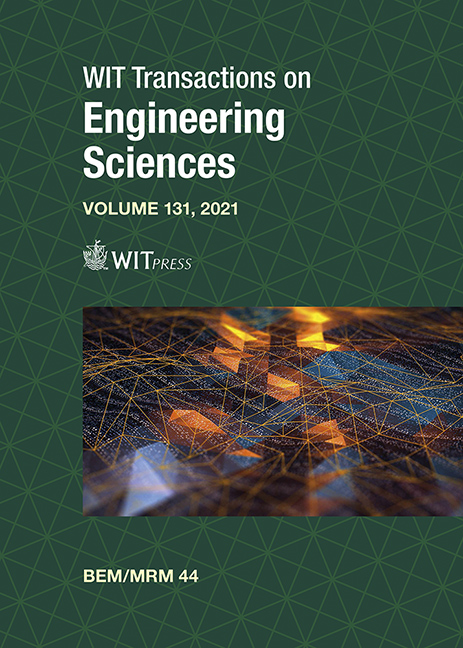BEM-BASED FORMULATION FOR THE ANALYSIS OF MULTI-STORY BUILDINGS INCLUDING SOILSTRUCTURE INTERACTION
Price
Free (open access)
Transaction
Volume
131
Pages
11
Page Range
83 - 93
Published
2021
Size
896 kb
Paper DOI
10.2495/BE440071
Copyright
Author(s)
AHMED U. ABDELHADY, AHMED FADY FARID, YOUSSEF F. RASHED, JASON MCCORMICK
Abstract
Modeling and analyzing multi-story buildings is an important part of structural engineering. Typically, this analysis is carried out using the finite element method by assembling the stiffness matrices of the floor elements and the vertical supporting elements at the intersecting nodes. Any consideration of soilstructure interaction (SSI) is often simplified using a Winkler model. However, the procedure for modeling practical buildings of complex geometries using the finite element method can be cumbersome. Alternatively, a new formulation that is based on the boundary element method (BEM) is presented that provides a seamless procedure for modeling practical buildings as the discretization of the floors is done at the floor perimeter and SSI is modeled using an elastic half space (EHS) model. The stiffness matrices of the slab and raft are generated using the BEM by introducing an additional collocation scheme at their intersection with the columns and the underlying soil. Columns are modeled as skeletal frame elements and the floors are considered as rigid diaphragms in their planes. Soil is modeled as an EHS and its stiffness matrix is derived based on the Bousinessq solution of an elastic, isotropic, homogenous, and infinite thickness half space. Assembly of the overall building stiffness matrix is carried out using the well-known assembly procedure associated with the stiffness analysis method. The proposed methodology is validated by comparing the results against the more traditional finite element approach. An illustrative example is solved showing agreement of the results between the proposed methodology and the finite element method.
Keywords
boundary element method, elastic half space, soil–structure interaction, multi-story buildings, stiffness analysis





